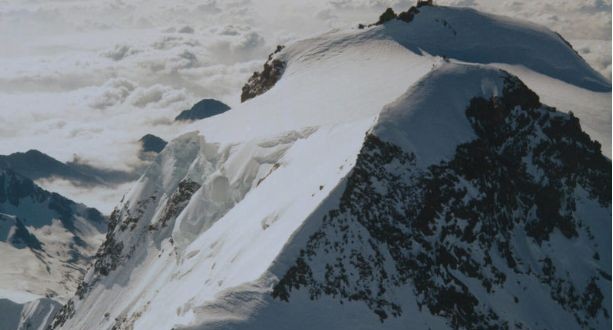The Zumsteinspitze was the first summit of the Monte Rosa massif to be climbed. Its name comes from the topographer Joseph Zumstein, who explored the peak with other scientists. The Zumsteinspitze is the third highest peak in the Monte Rosa massif, located on the border between Italy and Switzerland. It lies between Dufourspitze and the Signalkuppe, separated by the Grenzsattel and the Colle Gnifetti. Ludwig Freiherr von Welden, the Austrian general and topographer, named the peak after Joseph Zumstein, who completed the first ascent in summer of 1820 in the name of scientific research. The two explorers worked together on the mapping of the Monte Rosa massif.
The first ascent was the first day of August in the year 1820 by Joseph Zumstein. Alpinism history of Monte Rosa begun in 1778, when seven Italian people from Gressoney went up from south side to discover the mythical lost valley. They believed that over the mountains and the ridges existed a paradise, with animals and fruit trees, ancient home of their ancestors. The higher point to reach by the seven people was called stone of the discover. The first ascents are in 1801 when the priest Giordani conquered the peak calls with his name, also Vincent (Vincent Pyramid) and the priest Gnifetti (Punta Gnifetti) conquered other Monte Rosa peaks.
To reach Zumsteinspitze from Monte Rosa hut, starting from the Rotenboden station over the Gornerglacier it takes approximately 2 hours. The way over the glacier is partly marked by poles. From the station Rotenboden, hikers can choose the way with S-direction to the ridge saddle in the east of the Riffelhorn. After a few 1000 meters, the way goes up over the Gornerglacier to the east and slightly down to the south-flank of the Gorner-ridge. Once reached the Grenzglacier, traverse it to the south until east side of the Grenzglacier. Hikers then climb up on the glacier below the hut at the moraine in short zigzag. From Zermatt, hikers can go by car or bus from Visp/Brig and by train from Tasch. Zermatt is well known in the whole world as one center of the Walliser Alps.
It is likely that ibex on the Monte Rosa massif would now be history had not the draper, natural scientist and forestry inspector Joseph Zumstein from the Val de Gressoney. Who made the House of Savoy aware of the dwindling numbers of these impressive creatures. A protection order, the Patenti, was issued on September 21st 1821.

